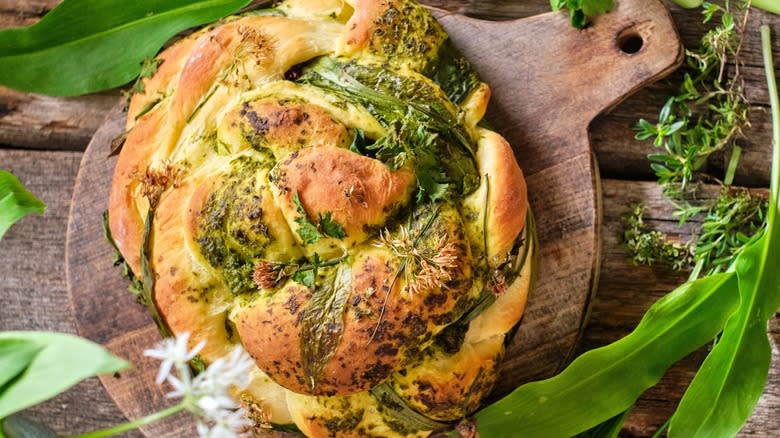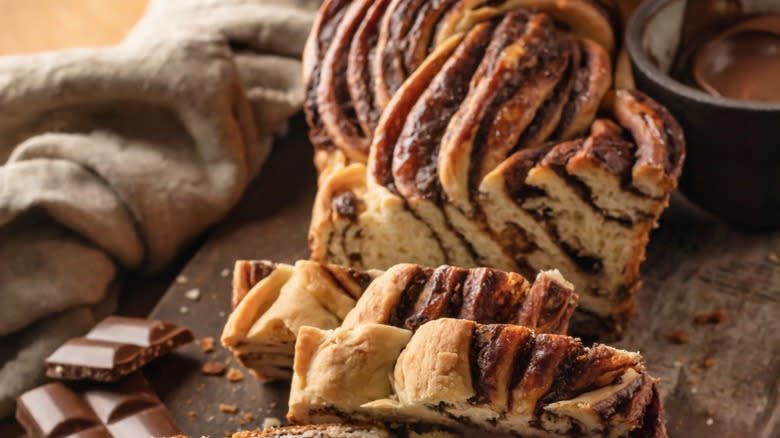How To Make Beautiful Braided Bread With Filling

Braided bread is as visually captivating as it is satisfying to the taste buds. Even more delightful is when this aesthetic snack has a little surprise filling. Fancy though it may appear, braided bread with filling is much more simple than it looks. The biggest tip is working the dough strands slowly and gently as you go. You also must ensure your filling is the correct viscosity to avoid making your bread soggy or weighing it down. Creating lightweight, braidable strands of filled dough and allowing adequate time for everything to rest prior to baking is a must. Truly, making filled braided bread comes down to the most basic virtues of patience and care.
Whether a colorful braided Easter bread or a classic challah for Shabbat, starting with a dough that has good structural integrity as your base is paramount for creating a filled braided bread. One of the most crucial steps in this process is proofing. That is, giving your dough time to rest and rise before moving to the next step. In fact, once you've filled and braided your strands of dough, it is imperative that you allow it at least 30 more minutes to rise before putting it into the oven to bake.
Read more: 23 Whole Foods Baked Goods, Ranked
The Dos And Don'ts Of Filled Braided Bread

The number one "do" for filled braided bread is to take the process nice and slow to ensure adherence to the very specific chemistry required when baking bread. After separating your dough into sections, carefully roll out the dough and spread the filling into each strand before rolling it up in the manner of a jelly roll and pinching the ends shut. For that last step, it is recommended to wet your fingertips first to make the pinching easier. To add a little flair to your braids, you can make small knife slashes or cuts to the strands prior to braiding so the flavored filling bursts forth — similar to the style of a traditional babka.
For the filling, make sure that you are using ingredients that aren't super wet. A thick jam, buttery swirl of cinnamon sugar, or a hearty mix of herbs and cheese are all excellent options because they will stick well inside your dough strands without making the bread sag. Consider filing your braided bread with a fresh herb pesto or any number of both sweet and savory cream cheese recipes. It's also important to not overfill your dough strands to avoid a mess in the oven. Taking your time and gathering together a delicious mix of ingredients for your dough and filling leaves your braiding skills as the sole variablel, and those are always fun to brush up on!
Read the original article on Tasting Table.


